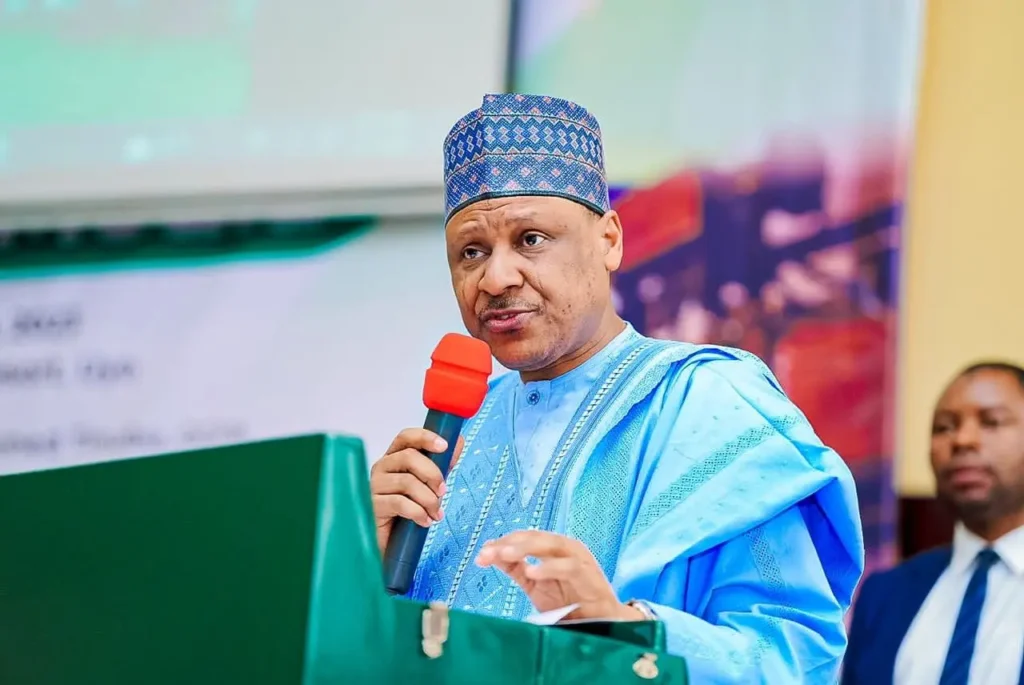
• Water sources under serious threat from widespread pollution
Despite budgeting millions of naira for water treatment and distribution plants, many states have either not been properly maintained or expanded to meet the growing population.
The founder, Rural Africa Water Development Project (RAWDP), Dr. Joachim Ezeji, who made the data available to The Guardian, said: “Right now, Nigeria is seriously off-track to meet Sustainable Development Goal (SDG) 6: Water and Sanitation for all by 2030. Millions of people and countless schools, businesses, healthcare centers, farms and factories do not have the safe water and toilets they need. To accelerate change, we need more action from states.”
Across the states, he stated, the story is not pleasant. Access to water and sanitation continues to be a challenge for households, especially in rural areas. As of 2021, 86 per cent of urban households had basic water access, while 57 per cent of rural residents do.
Households without basic access are still drawing water from unsafe sources such as rivers, creeks and ponds, or unprotected wells and springs.
Likewise, 59 per cent of urban residents have access to basic sanitation, while only 39 per cent of rural residents do. In fact, in 2021, 23 per cent of rural residents still practised open defecation, making Nigeria the home to the second largest population of people practising open defecation, globally.
Use of hygiene services, on the other hand, is extremely low across both urban and rural areas; it is only 25 per cent in the former and 13 per cent in the latter. Access to basic levels of all three types of facilities (water, sanitation and hygiene) in the same household is only 10 per cent, but this is higher in healthcare centres, of which only six per cent have access to all three.
Similarly, only 17 per cent of schools have access to basic water and sanitation facilities. The disparity in access is even larger between states and across wealth quintiles than it is between urban and rural areas. The state with the lowest level of basic water access was Sokoto, at 33 per cent, compared to the highest, which was Lagos, at 96 per cent. Similarly, only 14 per cent of Ebonyi had access to basic sanitation, the lowest of any state, while Imo had 76 per cent, the highest of any state.
Across Nigeria, the richest quintile had over four times the coverage of basic sanitation compared to the poorest quintile (78 per cent compared to 19 per cent) and twice the coverage of basic water (92 per cent compared to 46 per cent). Comparing access levels in 2021 with those observed in 2015 indicates that there has been a marginal increase in access to both water and sanitation in urban and rural areas (two to six per cent), and no increase in access to improved hygiene facilities.
The slow rate of progress is at least partially attributable to large population growth, and rates of urbanisation, but also reflects under-investment in the sector overall.
Of the estimated 2.3 million water points across Nigeria, the majority is self-supplied (an estimated 75 per cent). Where groundwater is an important source, there is considerable scope for improving reliability and resilience while scaling up the use of renewable energy: 43 per cent of all water points are boreholes, and only 3.3 per cent of those boreholes are motorised and powered by solar panels.
“Over half of all water points are publicly used (57 per cent). There is also considerable scope for improving the management of publicly used water points: only 51 per cent have caretakers in place, 30 per cent have management committees in place, and seven per cent have tariff systems in place.
“It is estimated that only 20 per cent of residents report having access to ‘sufficient’ quantities of water, defined as a minimum of 16 litres per person per day, available at a water source which is less than 500 metres away from their home. This is higher in rural areas, where a quarter of residents meet these criteria; in urban areas coverage of “sufficient” water quantities reaches only nine per cent.
Ezeji explained that the water scarcity in Nigeria is covertly economic and overtly political as both impacts on water management. “On a serious note, Nigeria’s water sources are under serious threat from inadequate catchment management and widespread pollution, including the indiscriminate disposal of hazardous substances. There is limited groundwater availability in the areas of the country underlain by crystalline rocks. In the more productive sedimentary areas, groundwater exploitation is heavy and uncontrolled.
“Poor watershed management, deteriorating water quality, drought and desertification are inexorably increasing water scarcity. Scarcity threatens urban and rural developments with rapidly rising water supply costs, reduced reliability of water supplies, prolonged droughts, flood and erosion and increasing costs of irrigated food production.
“Also, flooding is threatening communities, agriculture, infrastructure, and economic growth across the country. In the coastal areas, frequent and intense rainfall, rising sea levels and limited adaptive capacity driven by climate change is exacerbating the situation. In northern Nigeria, increasing competition over land and water resources is already contributing to regional instability and conflict among pastoralists and farmers.”
Further to the foregoing is the sustainability challenge of water supply services.
 Ezeji said, about 47 per cent of all publicly owned water facilities are non-functional and 30 per cent of water schemes fail within their first year of construction. Access to at-least-basic levels of drinking water service to Nigeria’s 115 million rural and 19 million small town inhabitants, stands at 56 per cent and 67 per cent respectively, and access to piped water on premises in urban areas has declined from 32 per cent in 1990 to just seven per cent in 2015.
Ezeji said, about 47 per cent of all publicly owned water facilities are non-functional and 30 per cent of water schemes fail within their first year of construction. Access to at-least-basic levels of drinking water service to Nigeria’s 115 million rural and 19 million small town inhabitants, stands at 56 per cent and 67 per cent respectively, and access to piped water on premises in urban areas has declined from 32 per cent in 1990 to just seven per cent in 2015.
Most of Nigeria’s 36 state-owned public water utilities rarely provide 24/7 water services, and none of them has universal coverage in any of its municipal areas. According to the World Bank (2017) WASH Poverty Diagnostic report, Nigeria’s WASH sector is ‘in a critical condition’.
The President, Network of Female Professionals in Water Supply, Sanitation and Hygiene in Nigeria (FEMInWASH), Dr. Boluwaji Onabolu, said the performance of the states vary, however, the WASHNORM 2021 survey indicates that about one-third of Nigerians don’t have access to basic drinking water. She blamed the decline on population growth and urbanisation.
For another expert, Oluwatomi Onafowokan, the states failed over the years to chase the emerging population and optimise the system, as well as design and plan to ensure sustainability of the systems. He further called for the reform of the water utilities.
A former president, Nigerian Water Supply Association (NWSA), Dubgari Abisabo, who rated states low in coverage and access to potable supply water by the citizens, said: “Our cities are growing fast while the infrastructures remain stagnant. Rather than expand, we are witnessing great decay in the limited existing facilities. Barring the multiplicity of private boreholes in most Nigerian cities, towns and villages, Nigeria would have been neck deep in potable water crisis.
“Water supply is on the concurrent lists of the Nigerian constitution, which means, the three tiers of government are at liberty to harness and develop the available water resources in their domain for public supply. However, what is obtainable in Nigeria is, the greatest responsibility of providing water for the citizens’ lie with the state governments.
“Many state water agencies have enjoyed several interventions from development partners with well packaged reform programmes, which were aimed at improving performance for sustainable growth, but each time have slipped back to status-quo at the end of the project circle. In the course of such interventions, water policies and laws were developed for them; institutional, technical and operational reforms were put in place, leading impressive Key Performance Indicators (KPIs).”
According to him, without water, no life can exist because it is a basic necessity of life. A lack of water will affect the general development of the people, “in the absence of water a nearby water source, the economic activities will be impaired. Women and children are the one who bear the brunt of lack of water because they will spend many man-hours search for it at the expense of other economic activities. Most businesses also cannot survive in the absence of water in the right quality and quantity.”
Meanwhile, environmentalists are celebrating the World Water Day globally today. The theme of 2023 World Water Day seeks to address the need to accelerate change (reform) that will bring about improvement in the production and distribution of water with the sole aim of providing adequate water for our citizen.
To achieve this noble objective, Abisabo urged governments at the national, state and local levels as well as the private sectors must join hands to develop the water sector through funding, monitoring and supervision as the case may be. “The state water agencies must also ensure that they develop blue prints and work plans which can be smartly implemented for sustainable growth.”
Ezeji recommended the strengthening water and sanitation sector governance, asset management, financing, institutions, and markets. “We can achieve this by developing, strengthening, and implementing inclusive laws, policies, and regulations. There should be an emphasis on transparency among relevant government bodies that could be complemented through engagement with civil society groups, to ensure that policy makers and regulatory bodies maintain communication and coordination with stakeholders and stakeholders keep government actors accountable.”
He also called on the authorities to effectively mobilise, target public and private financing to address the huge financing gap in the Nigeria water sector. “It is essential to look at both public and private sources of financing. It is also crucial to increase the financial viability of service providers through tariff adjustments, improvements in commercial and operational practices, reducing water losses, and increasing cost recovery, in general.
“States should improve the capacity and performance of its service providing institutions to enable them coordinate more and work more closely together under a regulatory system that clearly clarify their roles and responsibilities. State-level government institutions should be supported to build up their capacity as they create and implement policy, and in their efforts to monitor and regulate the WASH sector.
“There is need to advance transparency, accountability, equity, and efficiency through participatory, data-driven decision-making. It is important that states begin to develop and deepen accountability and monitoring mechanisms for WASH services, better protect consumer interests, and increase environmental sustainability of WASH services.”












